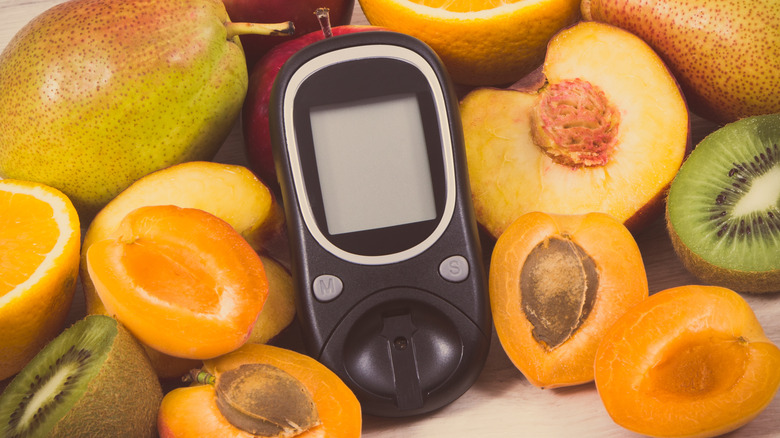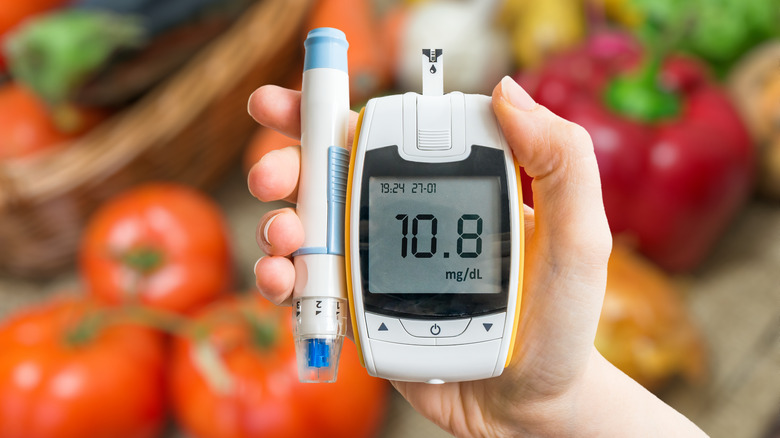What It Really Means If You Have Prediabetes
Prediabetes is a health condition in which your blood sugar is higher than normal (via Mayo Clinic). It is not high enough to be considered type 2 diabetes, but if not managed through diet and lifestyle changes, individuals with prediabetes will likely go on to get type 2 diabetes. According to the Centers for Disease Control and Prevention, about 88 million American adults have prediabetes. That's more than 1 in 3 people. Of those people, the majority don't even know they have it.
The exact cause of prediabetes is not known, but people with the condition don't properly process glucose, or sugar, anymore. Normally, when glucose enters the body through food, a hormone called insulin is released from the pancreas which moves the sugar from your bloodstream to the cells. When you have prediabetes, your pancreas may not make as much insulin or cells may become insulin resistant. As a result, sugar then builds up in the blood. If not treated, blood sugar will continue to rise over time and may result in type 2 diabetes.
Risk factors and treatment options for type 2 diabetes
Prediabetes predisposes you to a number of health risks in addition to type 2 diabetes, including an increased chance of heart disease, stroke, and kidney damage (via Mayo Clinic). Many people with prediabetes don't have any symptoms so it usually goes unnoticed until health issues like type 2 diabetes present.
Risk factors for prediabetes include being overweight, being 45 or older, having a family member with type 2 diabetes, being physically inactive less than three times per week, a history of gestational diabetes, and having polycystic ovary syndrome (PCOS). Black and Latinx Americans, as well as Native Americans, Pacific Islanders, and Asian Americans are at an increased risk of prediabetes.
Prediabetes can be treated with lifestyle changes (via Cleveland Clinic). One of the first things you can do is lose weight. Shedding just 5 to 7% of your body weight can significantly improve your health. Aim to eat a healthy diet and get regular physical activity. Ideally, you should be exercising 30 minutes a day for five days a week. Quitting smoking, limiting alcohol consumption, and managing stress will also reduce the risk of health complications.


